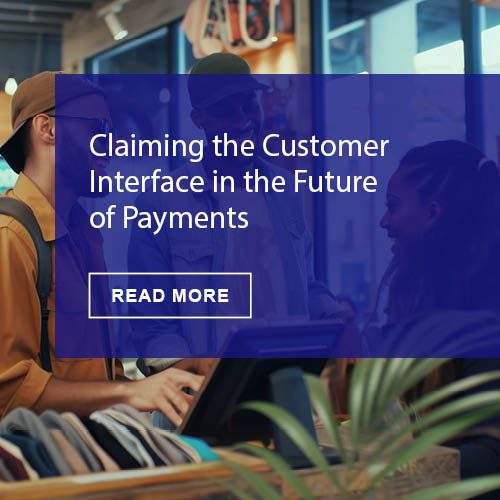As digital technology continues to evolve, more consumers are turning to mobile ordering options for everything from food and groceries to retail purchases and services. The convenience and speed offered by mobile apps have made ordering on-the-go an increasingly popular choice. Businesses across various industries are responding by expanding their mobile platforms, offering enhanced user experiences, and providing seamless payment and delivery options. With mobile ordering growing and becoming a cornerstone of the modern customer experience, its impact on consumer behavior and business operations is undeniable.
Why Mobile Ordering Is on the Rise
Several factors have contributed to the rapid rise in mobile ordering:
- Convenience: Mobile ordering offers unparalleled convenience, allowing consumers to place orders from their smartphones anytime, anywhere. This eliminates the need to wait in long lines or spend time on the phone, making the process much more efficient for busy individuals.
- Time-Saving: Consumers increasingly value time-saving solutions, and mobile ordering delivers just that. By enabling users to browse menus, select items, and pay within a few clicks, the process is streamlined, allowing them to receive their orders with minimal effort.
- Personalization: Many mobile apps offer personalized experiences based on past orders, preferences, and customized recommendations. This personalized touch not only enhances the user experience but also fosters brand loyalty.
- Contactless Payment and Delivery: The COVID-19 pandemic accelerated the adoption of contactless solutions, and mobile ordering became a key way to minimize physical contact. Features like contactless payments and delivery options helped drive mobile ordering’s popularity during the pandemic, and these trends have continued even as restrictions have eased.
Industries Adopting Mobile Ordering
While mobile ordering is most often associated with the food and beverage industry, its usage has expanded across various sectors:
- Food and Beverage: Fast-food chains, restaurants, and cafes were among the first to adopt mobile ordering. With apps from companies like Starbucks, McDonald’s, and Domino’s leading the way, mobile ordering has revolutionized how consumers buy food, allowing them to skip lines and customize their orders.
- Grocery Delivery: Major grocery retailers like Walmart and Instacart have introduced mobile ordering for groceries, enabling customers to order their groceries online and have them delivered to their doorsteps or available for curbside pickup. This service has been especially popular among busy families and those seeking convenience.
- Retail: Retailers like Target, Walmart, and Amazon have also embraced mobile ordering, offering users the ability to browse products, make purchases, and choose delivery or in-store pickup options. Retail apps often provide real-time inventory checks and personalized shopping recommendations, making the experience even more efficient.
- Service Industry: Businesses in the service industry, such as salons and automotive services, are now integrating mobile ordering to allow customers to book appointments, make payments, and receive reminders—all via mobile apps.
Benefits for Businesses
The rise of mobile ordering presents several advantages for businesses, helping them meet consumer demands while boosting operational efficiency:
- Increased Sales: Mobile ordering often leads to larger order sizes, as consumers tend to add more items when browsing through a mobile app. Additionally, the convenience of mobile ordering can attract more frequent purchases.
- Improved Customer Loyalty: Mobile apps often incorporate loyalty programs and exclusive deals for users, encouraging repeat business. Consumers are more likely to stay loyal to brands that offer a personalized, convenient, and rewarding mobile experience.
- Operational Efficiency: By streamlining the ordering process, businesses can operate more efficiently. Mobile orders reduce the burden on in-store staff, allowing them to focus on fulfillment and customer service, while orders are processed more accurately and quickly.
- Enhanced Customer Insights: Businesses can collect valuable data on customer preferences, behaviors, and purchase patterns through mobile ordering platforms. These insights can be used to improve marketing strategies, tailor offers, and enhance the overall customer experience.
Challenges of Mobile Ordering
Despite its many advantages, businesses face challenges in implementing and managing mobile ordering platforms:
- Technology Investment: Developing and maintaining a robust mobile ordering system requires a significant investment in technology and infrastructure. Small businesses, in particular, may find it challenging to adopt these systems due to the costs involved.
- User Experience: A seamless user experience is critical to the success of mobile ordering. If an app is difficult to navigate or prone to glitches, customers may abandon their orders. Ensuring that apps are intuitive, responsive, and user-friendly is essential.
- Security Concerns: As with any digital platform, mobile ordering systems must prioritize data security to protect customer information, including payment details. Businesses must implement strong security measures to safeguard against data breaches and fraud.
The Future
Mobile ordering is set to continue growing as more consumers embrace digital solutions for their shopping needs. The future of mobile ordering will likely include:
- Integration with Emerging Technologies: As AI, machine learning, and voice-activated technologies continue to evolve, mobile ordering platforms will likely integrate these innovations to offer even more personalized and efficient experiences.
- Expanded Contactless Services: Contactless options will remain a priority, with features like contactless delivery, payments, and curbside pickup becoming standard for many businesses.
- Omnichannel Experiences: As consumers expect seamless interactions across various platforms, businesses will focus on providing an omnichannel experience, where mobile, in-store, and online interactions are interconnected and consistent.
The growing adoption of mobile ordering options reflects the changing preferences of modern consumers, who seek convenience, speed, and personalization in their purchasing experiences. Businesses across industries are responding by embracing mobile technology, streamlining operations, and enhancing customer experiences. As mobile ordering becomes an integral part of daily life, its impact on consumer behavior and business strategies will only continue to expand.











